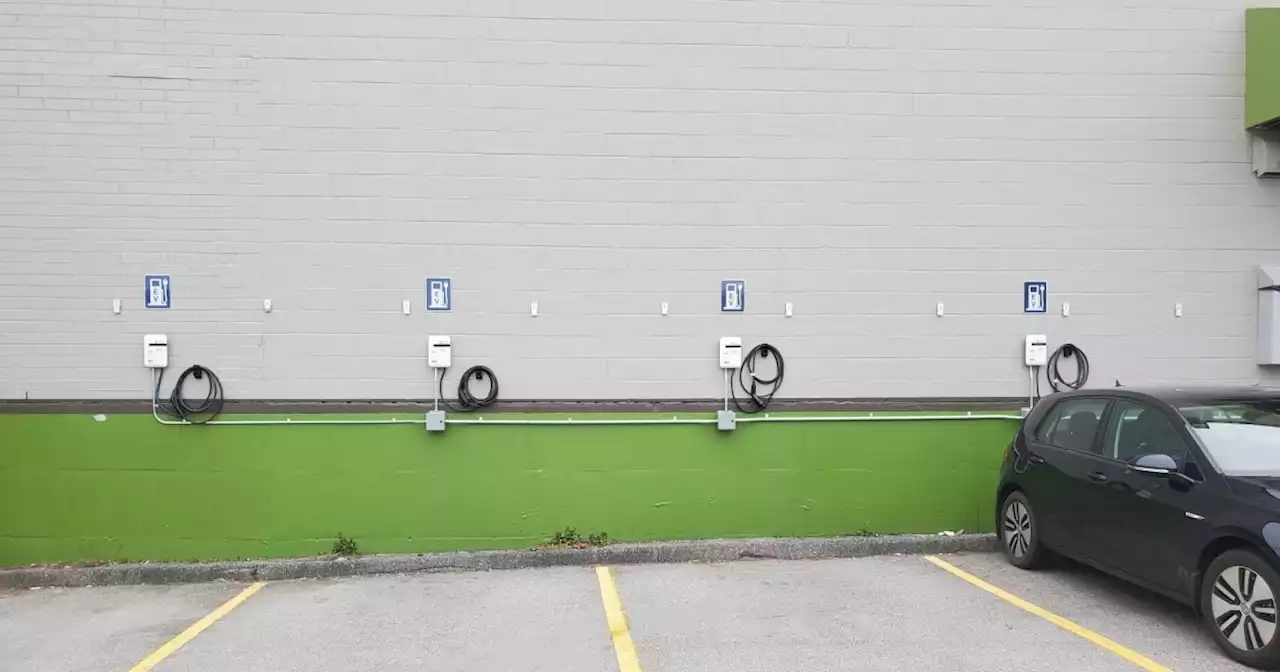Electric-vehicle uptake is on the rise, but there’s no common standard across the country to ensure that owners moving into new condos and apartments will have a place to plug in
Developers of new multiunit residential buildings in many cities have begun installing electric-vehicle chargers to serve some of the nearly half of Canadians who live in condominiums, rental apartments and other homes lacking private driveways.
In Vancouver, city building regulations stipulate that all new parking spots, except visitor spaces, be EV-ready, meaning equipped with an “energized outlet” for EV charging, though not necessarily with the charger itself, according to the bylaw. The city estimates that its rules for new building projects are creating 9,000 residential charging circuits each year.
Provincial governments, which regulate development through building codes, have generally steered clear of the issue. The National Building Code of Canada, developed by the federal government and used as a model by provinces, has been silent on EV charging in MURBs. Multiunit charging regulations would have the greatest influence in denser cities, but nearly half of Canadians could be affected. According to the 2021 census, 47.5 per cent of the population lived somewhere other than a detached house.Denis Arsenault, president of the architecture and engineering company Spitfire Design Co. in Moncton, N.B., said more developers of rental apartments are asking for chargers in their designs. But the percentages remain relatively modest.
Yet with most EV drivers doing about 80 per cent of their charging at home and Ottawa calling for all vehicle sales to be zero-emissions by 2035, even new parking garages with a handful of EV-ready spaces will soon be dramatically behind the times. “It’s just way more economical,” he said, and the garage layout could be optimized to accurately predict the amount of power required from the utility.“It’s a lot easier to do it upfront,” he said, pointing to issues such as a lack of wiring and underpowered electrical panels when trying to add chargers after the fact.“They do not want to put in a charger ... that they’re not going to sell because they do not want to spend money that they can’t recoup,” Marmer said.
Government action such as the Vancouver bylaw requiring all spaces to be EV-ready helps encourage this middle ground, Marmer said. • British Columbia: The B.C. Building Act has no requirements for EV chargers in MURBs. It considers the issue “out of scope,” giving local governments the ability to regulate it.
Philippines Latest News, Philippines Headlines
Similar News:You can also read news stories similar to this one that we have collected from other news sources.
 Category 3 Hurricane Orlene heads for Mexico's Pacific coastHurricane Orlene grew to Category 3 strength on Sunday as it headed toward Mexico's northwest Pacific coast between the tourist towns of Mazatlan and San Blas.
Category 3 Hurricane Orlene heads for Mexico's Pacific coastHurricane Orlene grew to Category 3 strength on Sunday as it headed toward Mexico's northwest Pacific coast between the tourist towns of Mazatlan and San Blas.
Read more »
 Category 3 Hurricane Orlene heads for Mexico’s Pacific coastCat. 3 Hurricane Orlene heads for Mexico’s Pacific coast
Category 3 Hurricane Orlene heads for Mexico’s Pacific coastCat. 3 Hurricane Orlene heads for Mexico’s Pacific coast
Read more »
 Hurricane Orlene could bring flash floods, mudslides to MexicoMEXICO CITY — Hurricane Orlene barreled toward Mexico’s southwestern coast as a dangerous Category 3 storm and is expected to dump torrential rains even as it…
Hurricane Orlene could bring flash floods, mudslides to MexicoMEXICO CITY — Hurricane Orlene barreled toward Mexico’s southwestern coast as a dangerous Category 3 storm and is expected to dump torrential rains even as it…
Read more »
 Sweet and salty: The growing fame of Ottawa-raised comedian Sophie BuddleSophie Buddle left Ottawa at the age of 19 to seek her fortune on the West Coast.
Sweet and salty: The growing fame of Ottawa-raised comedian Sophie BuddleSophie Buddle left Ottawa at the age of 19 to seek her fortune on the West Coast.
Read more »
 Category 4 Hurricane Orlene heads for Mexico's Pacific coastHurricane Orlene grew to Category 4 strength on Sunday as it headed toward Mexico's northwest Pacific coast between the tourist towns of Mazatlan and San Blas.
Category 4 Hurricane Orlene heads for Mexico's Pacific coastHurricane Orlene grew to Category 4 strength on Sunday as it headed toward Mexico's northwest Pacific coast between the tourist towns of Mazatlan and San Blas.
Read more »
